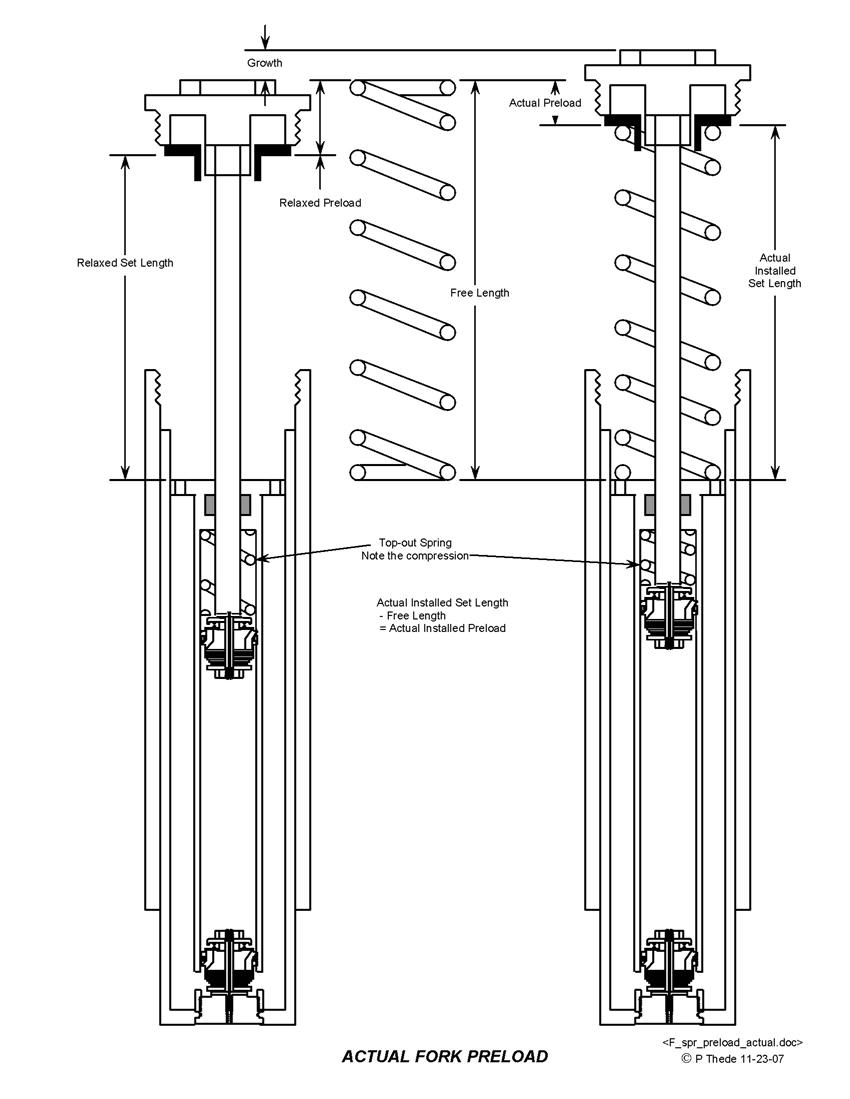FORK PRELOAD - RELAXED & ACTUAL2(many 2000 and later sport bikes)
This mostly applies to some 2003 and later sport bikes but also some dirt bikes (2012 KX250F) Back-in-the-day life was easy. Measuring preload was simple. (Refer to figure at right). All you did was measure the Free Length of the spring and subtract the Set Length to calculate Preload.
Preload = Free Length - Set Length
Life is harder now (tell mom and dad). One of the more recent developments for sport bikes are "long, soft, top-out springs". A soft Top-Out Spring Fork actually gets longer when you install the main fork spring. This means that the Set Length gets longer and the Actual Preload is less than initially calculated. In the old days the Top-out Spring was so stiff the fork barely grew when the main spring was installed so we didn't have to account for this. What to do, what to do? Let's define some new terms:
Relaxed Preload = Free Length - Relaxed Set Length
Actual Preload = Free Length - Actual Installed Set Length To make life easy feel free to download our ►Relaxed Preload Worksheet When getting Preload recommendations from the DVS or Product Search we give Relaxed Preload because it is much easier. We give a note in both the Product Search and DVS Valving Search to notify you that you are dealing with long soft top-out springs. The difference can be as much as 40mm. In many cases we recommend replacing the stock "long, soft, top-out springs" with our Reactive Spring Series. They are not as stiff as the old days but are not nearly as soft or as long as the new-fangled ones. Testing has shown the proper top-out spring can drastically affect traction particularly when leaned over in the turns.
|


